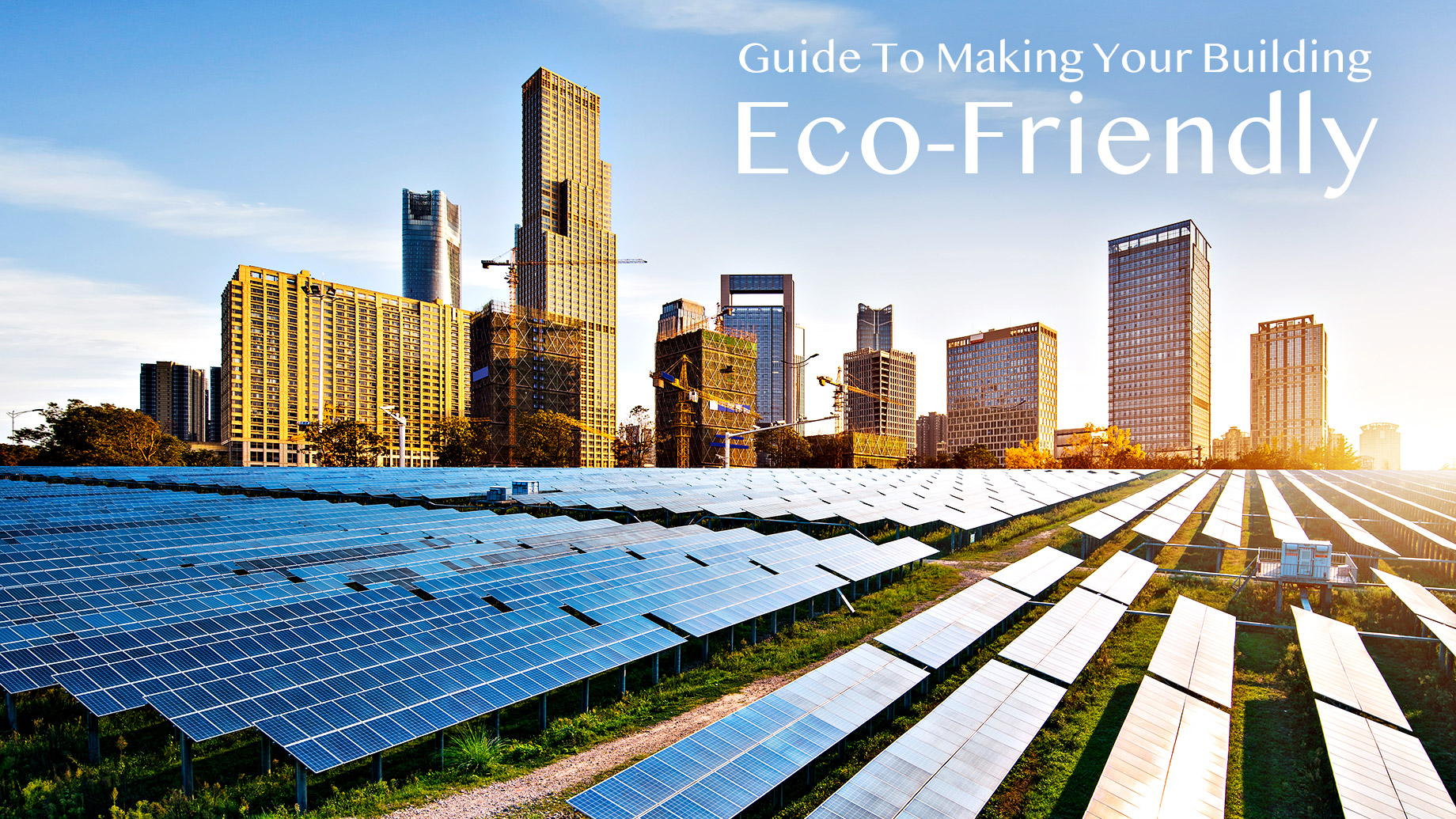
Making a building eco-friendly is not a unidimensional process, it is accomplished at the intersection of aware building owners who invest in intelligent design, which revolves around environment-friendly material and green technology. What’s extremely underrated about eco-friendly buildings is how they require lesser maintenance, with promised longevity and safety with regard to life span and legal compliances.
Here’s how you begin:
1. Ensuring energy-efficiency
It helps reduce utility bills, and even while making a sale, such features facilitate it by making the property more attractive and appealing. Most properties with modern appliances have been shown to report a higher net sale price.
This is crucial because it makes your home low-maintenance in the longer run. Some other common practices are installing solar panels on the roof, considering double-paned windows, putting up LED lights, replacing old HVAC, etc.
It doesn’t matter how big or holistic or comprehensive the energy upgrade is, as long as there are small and calculated steps in its direction are being taken.
If you still feel too lost, (which is understandable because energy efficiency can be achieved in various ways and is a dynamic field), reach out to experts. We recommend booking an assessment with The Cotocon Group.
2. Get an energy audit and building decommissioning
This is precisely the only way to track and rectify energy wastage in your building. This is also inevitably the first step towards energy efficiency for buildings. Reaching out to experts will help you quantify the excess wastage and devise a plan to check it immediately.
Recommission comprises an inspection of the building systems to ensure proper operation while adjusting sensors and controls. The biggest advantage is that you also meet the compliance requirements of Local Law 87, which demands these procedures at 10-year intervals. In addition, you will also be working towards a better grade under LL33.
If the task of making your building energy efficient sounds overwhelming, we recommend seeking help from the experts in the industry, particularly The Cotocon Group. They have an established history of rendering energy services.
3. Install smart features
Smart features help reduce the overall consumption depending on the latest gas and energy prices. A smart thermostat can adjust your house’s energy consumption depending on the latest gas or electricity prices, or even allow you to phone in instructions such as turning on the furnace before you get home. Prices range from $150 to $400 or more, plus installation from a trained electrician or HVAC contractor.
Try the Emerson or Aprilaire 8600. Also, consider installing LED lighting and checking your building’s insulation mechanism. Optimal efficiency measures are different for each building but LED lightings are the common denominator. They facilitate energy reduction by 70-75%. Sensors could be used in places used infrequently (conference rooms and restrooms).
Whereas, the exterior cover of a building should be designed to lower heating and cooling as needed. The goal should be to make the building as airtight as possible. This can be achieved by replacing doors and windows to avoid air leaks in the existing buildings. However high-performance insulation along with non-traditional wall systems which offer additional insulation can be an alternative solution.
4. HVAC! HVAC! HVAC – Maintain it!
Heating, Ventilating, and Air-conditioning (HVAC) are alone responsible for more than 40% of energy consumption. The labeled products help save up to 16% energy which translates to a weekly saving yearly saving of at least $100.
Air-conditioning does not contribute much to the bills, taking up around 6% of energy. ENERGY STAR central air-conditioning units provide 8% more efficiency. The air-conditioning systems are usually integrated with the heating systems implying that it’s ideal to purchase both at the same time to maximize efficiency.
5. Insulation
The exterior cover of a building should be designed to lower heating and cooling as needed. The goal should be to make the building as airtight as possible. This can be achieved by replacing doors and windows to avoid air leaks in the existing buildings. However high-performance insulation along with non-traditional wall systems which offer additional insulation can be an alternative solution.
6. It’s all about the materials utilized
Materiality essentially revolves around the extraction, production, and transportation of the materials as they contribute immensely to emissions. The steel industry alone is known to contribute up to 30-40% of the carbon emissions as far as the industrial sector is concerned, whereas cement accounts for approximately 19-20%.
Manufacturers and environmental engineers have been attempting to mitigate the effects of the same through natural materials.
Natural materials (natural stones and various types of wood) usually need a very low production process, however, their transportation to the construction site always proves to be a big hassle. It’s also advised to limit carbon-intensive materials such as aluminum, plastics, and various foam insulations.
To be able to perform carbon sequestration, which is yet another great way of tackling the issue at hand, the materials used must be sequestration friendly. The agricultural products that enable sequestration to leave a huge impact on the embodied carbon. Therefore, consider wood, straw, or even hemp.
7. Regeneration and renewables
See if your project allows for its electricity to be generated via renewables. Renewables include solar energy, hydropower generation, waste and biomass energy, and tidal or ocean energy. Renewables make for a brilliant alternative because unlike fossil fuels, the main source of greenhouse gas emissions.
Renewables as a whole industry has been experiencing great popularity. Countries like Iceland and Costa Rica tend to get almost all of their electricity from alternative sources such as renewables. Meanwhile, other countries still function at a 5-10% usage of regenerative renewables.